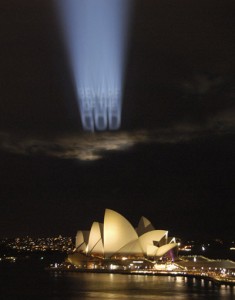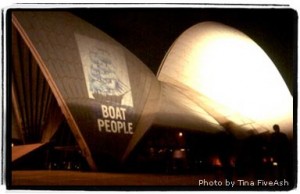ANAT’s core mission is to actively support the field of media arts in Australia by taking a leading role in shaping the environment in which media arts practice exists. This includes providing opportunities for research and development of emerging forms, such as: networked, distributed, locative and mobile media, experimental sound, robotics, bio-art, wearable technologies and art/science collaborations. ANAT also provides financial support for the professional development of emerging artists; creating platforms to profile innovation and excellence; and encouraging critical debate.
This Lo-fi vs Hi-tech edition of Filter provides the opportunity to examine how environmental factors such as legislation and resourcing shape the creation of media arts practices. Although media artists excel in finding smart solutions to tricky financial and technical resource issues, and many are acutely aware of how the constitutional environment profoundly affects their practices, this can be potentially dangerous territory. A prime example is that, due to event and venue licensing, the majority of exciting experimental performances in the Australian electronic music arena happen in illegal warehouse venues. At any time these venues could be raided, closed down (as the Frequency Lab in Sydney was recently), and the organisers heavily fined. Not surprisingly these events remain largely invisible to an arts and more general audience and find it impossible to attract any sort of legitimate funding. The organisers and artists cyclically quit after years of financial struggle, leaving a wider cultural poverty.
Particularly worrying is the Australian Anti-Terrorism Act 2005, which revitalised Sedition laws which had been effectively defunct for nearly half a century – laws that had been used against those who opposed conscription during the First World War. Sedition as a criminal offence developed in the 17th and 18th centuries in England, emerging out of the laws against treason and libel – aimed at shielding the Crown (and its institutions and officers) from criticism that might lessen its standing and authority among its subjects.
Not surprisingly, ANAT joins the many Arts Organizations who oppose this legislation on the basis that it threatens an artists’ freedom of expression. The basic ground rules of innovation and creativity and first principles of art and academic training are to look for different perspectives, to be actively critical by thinking outside established genres and to question the status quo. Today the public and artistic expression of these attributes can be punishable by a 7 year jail sentence.
One of the most daring public art interventions to date in Australia was the painting of NO WAR in blood red, 6 meter high letters on the Sydney Opera House in March, 2003. Despite the fact that 75% of Australians opposed the invasion of Iraq, the painters (filmmaker Dave Burgess and scientist Will Saunders) were arrested and charged with malicious damage. Both were sentenced to 9 months periodic detention and ordered to pay $151,000 compensation. They raised the money by selling their ‘quality kitsch’ artworks that ranged from $1 fringe magnets to the delightful $20 No War Opera House Snow Domes, to $900 editioned photographic prints.
Previously, in October 2001, the Sydney Opera House became a 15 meter high billboard as tactical media practioners boat-people.org projected an image of a First Fleet ship with the accompanying text ‘Boat People’. This conjunction equated Australians of British military and convict heritage with contemporary refuges that arrive regularly in Australia via harrowing, dangerous boat journeys. Regardless of race or religion these modern asylum seekers are derogatorily labelled as ‘Boat People’. Security guards eventually shut down the projector, but luckily the artists were not prosecuted.
For delicious irony skip forward 4 years and .5 km from the Opera House to the Museum of Contemporary Art. In 2005 the MCA commissioned cross-media artist Deborah Kelly (a founding member of boat-people.org) to produce the Beware of the God Project. The work looks critically at the rise of religiosity in politics, and included a massive public cloud projection over the same iconic Opera House and harbour vistas boat-people.org targeted. It also played on Video Billboards in CBD underground railway stations every 10 minutes for two months, and a limited edition of ‘Beware of the God’ metal plates were available, to attach to picket fences across Australia.
So just what makes one artwork illegal and potentially seditious and another a highly sought after and collectable object? Please consider this question while enjoying our magazine, edited by Melbourne artist and producer Emile Zile who has gathered many fabulous perspectives on our daily consumption of art, goods and imagery.
Melinda Rackham
Melinda was the Executive Director at ANAT from 2005 to 2009.
Read More
http://www.boat-people.org/
http://www.bewareofthegod.com/
 This work is licensed under a Creative Commons Attribution-NonCommercial-ShareAlike 2.5 Australia.
This work is licensed under a Creative Commons Attribution-NonCommercial-ShareAlike 2.5 Australia.








